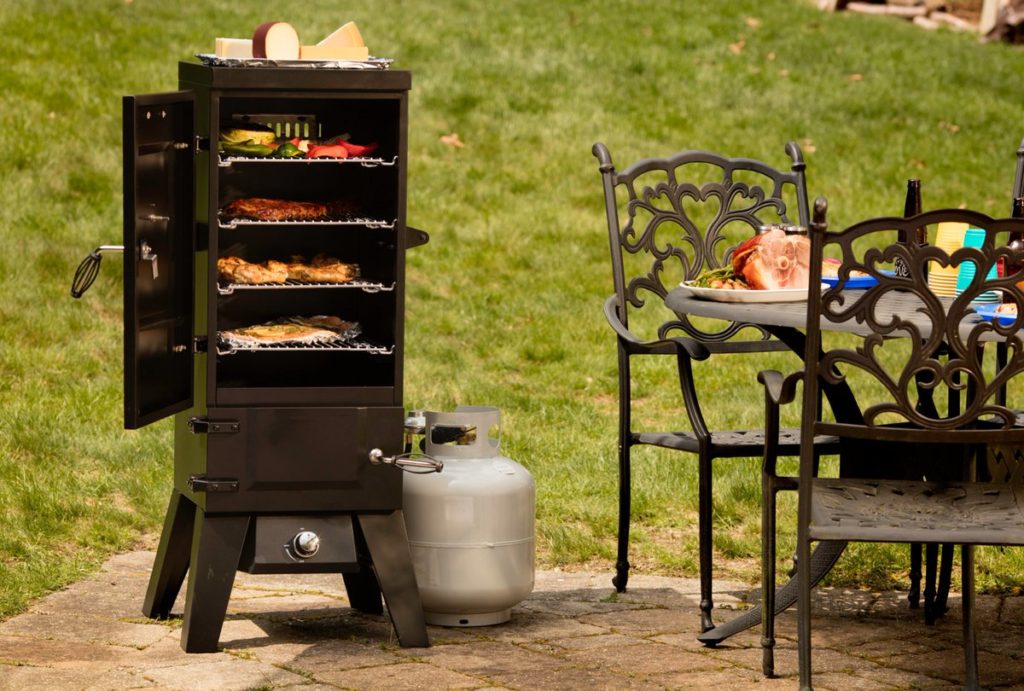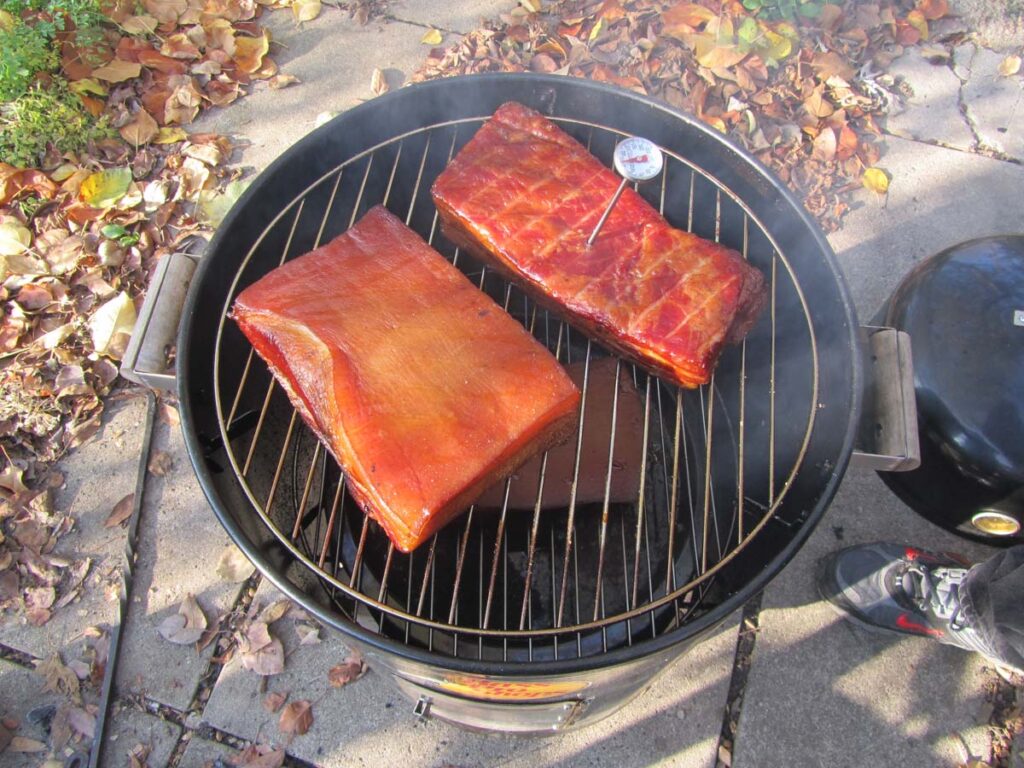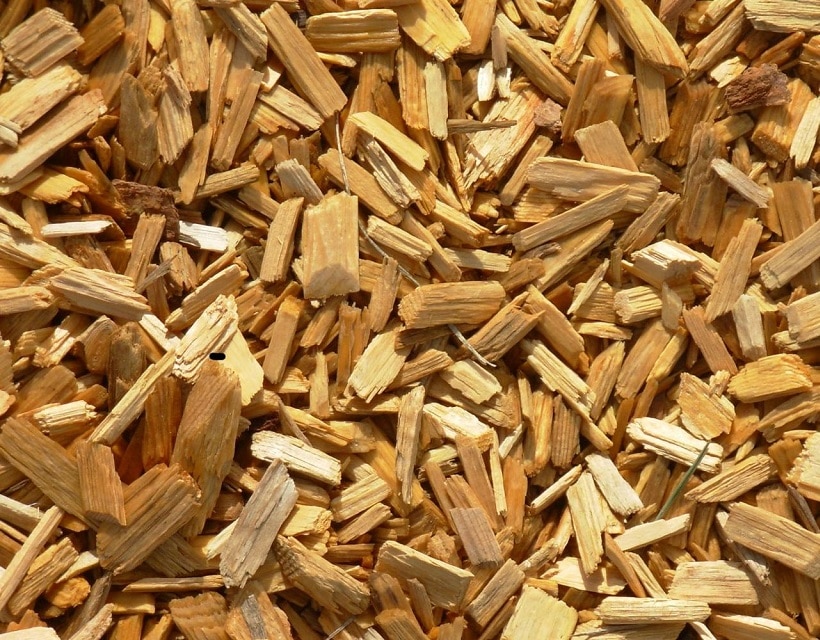

Who doesn’t enjoy the robust, flavorful taste of a well-smoked piece of meat? Since smoking meat is relatively easy, one of the common problems you might encounter is heat and smoke escaping from your smoker. This happens when your smoker isn’t insulated correctly. So, just how to insulate a smoker?
In today’s article, we’ll have a look at why you need to insulate your smoker. What accessories will you need? Read on to find out how insulating your smoker will provide you with a better smoking experience.
The superb and flavorful taste of smoked food depends largely on temperature and perfect levels of smoke. If your heat and smoke escape, it can leave your food half cooked and lacking in the robust flavor you were hoping for.
There can be several reasons why heat and smoke escape your smoker. One of the common reasons is smoking in the winter. Colder temperatures cool the smoker and inadvertently reduce the smoke inside. Does this mean you should only use your smoker in the summer? Fortunately, there’s a way around losing smoke and heat during the colder months.
Smoker insulation is a simple process that keeps the heat and smoke in the smoker where it belongs. Keeping the smoke and heat inside the smoker keeps the smoke focused on the food, and you’re then guaranteed to get the meal you’re expecting. But just how do you insulate your smoker?
This process might be done with common materials:
Choosing the right insulation for smoker is crucial to keeping the heat and the smoke where it’s needed. In addition to retaining heat and smoke, smoker insulation will also preserve fuel, which saves you money in the long run.
If you’re going to be smoking food for the first time, you’ll need a quality smoker to begin with. The Dyna-Glo Signature Series Heavy-Duty Charcoal Smoker & Grill is a perfect option. This nifty charcoal smoker features a total of five chrome cooking grates, giving you ample space for a variety of different foods.
A cool-touch spring grip lid provides safe access to your food. Also, these products with features like a stainless-steel temperature gauge allow you to choose the perfect temperature for the best smoke-infused flavor in any type of food!
Listed below are a few of the most common types of BBQ smoker insulation options you can add to your smoker to prevent smoke and heat from escaping.
Insulation blankets are a common way to insulate smokers. They differ from insulation jackets because of the positioning of the aluminum layer. Jackets feature the aluminum layer on the outer layer while blankets have them on the inside.
While it doesn’t make a difference to the level of insulation, the key difference to choosing a blanket over a jacket is the fit. With a blanket, you don’t have to find the exact manufacturer’s fit for your smoker. Simply wrap the blanket around your smoker as many times as necessary to provide a secure fit. Again, to avoid getting the blanket burnt, avoid wrapping it around the firebox.
The Stanbroil BBQ Grill Thermal Insulation Blanket Replacement is a fire-resistant fiberglass blanket that is both heat resistant and thermal insulated. It’s a good example of the item acting as a buffer between the grill and the elements. This reduces the amount of fuel you burn, especially when you’re smoking on colder days.
The protective outer layer serves as a shield to maintain an even and consistent temperature allowing you to grill or smoke food at higher temperatures. This is possible because the heat gets trapped in the heating chamber and transfers directly to the food.
Cement board is a blend of cement and strengthened fibers molded into sheets. These cement boards Trusted Source Cement board - Wikipedia A cement board is a combination of cement and reinforcing fibers formed into sheets, of varying thickness that are typically used as a tile backing board. en.wikipedia.org can be made in various thicknesses and are mostly used as tile backing boards.
These types of boards add impact resistance and extra strength to the wall exterior it’s placed against. Since cement board is fire-resistant, it’s a practical option to use as a smoke insulator for your smoker’s firebox. We’ll discuss the easiest way to insert cement boards into your firebox a little later in this article.
One of the most popular options for a vertical smoker must be insulation jackets. With aluminum foil insulation Trusted Source Aluminium foil - Wikipedia Aluminium foil (or aluminum foil in North America; often informally called tin foil) is aluminium prepared in thin metal leaves with a thickness less than 0.2 mm (7.9 mils); thinner gauges down to 6 micrometres (0.24 mils) are also commonly used in the United States, foils are commonly measured in thousandths of an inch or mils en.wikipedia.org inside, these jackets are among the most effective ways to insulate your smoker.
Since manufacturers make insulation jackets to fit their smokers, you’re guaranteed to find an exact fit. A crucial point to remember here is to never cover the firebox of your smoker, as it will burn and ruin the jacket.
Another fireproof insulation for smoker option is a welding blanket. Welding blankets are specifically designed to protect welders from heat and sparks generated while they’re welding. If you already own a welding blanket, you can simply use this as opposed to especially buying a smoker insulating blanket or jacket.
Unlike the jacket options, you don’t have to look for the exact fit for your smoker. You can simply wrap the blanket around the smoker enough times to ensure a snug fit. As always, avoid the firebox because you wouldn’t want the blanket to get burnt.
If you think a welding blanket is a great idea, you might want to invest in a 4×6 ft Heavy Duty Welding Blanket. This blanket is used by welders and since it’s flame retardant, it’s perfectly safe for smokers, grillers and even bonfires!
You might also be wondering how to insulate a smoker firebox. The trick here is to use a cement board. Using a cement board requires a bit of work on your part but by following the steps below you’ll have it done in no time!
With the above, it’s easy to see that smoker insulation is not only necessary but probably a lot easier than you first anticipated. The two most crucial elements needed for smoking food perfectly are heat and smoke and keeping them inside the smoker is equally important.
Selecting one of the options above will answer the question of how to insulate a smoker. It allows you to focus your attention on something else while your smoker takes care of the food the way it’s meant to, no matter the temperature outside!





